Seborrheic Dermatitis
(Dandruff)
Seborrheic Dermatiti (Dandruff) Research in Portland, Oregon
Seborrheic dermatitis is a common skin condition with red, scaly, often itchy rash in various areas of the body. Most commonly, it affects the scalp, the sides of the nose, eyebrows, ears, and middle of chest. Other areas that may be affected include the navel (belly button) and skin folds under the arms, breasts, groin, and buttocks. These areas contain high concentrations of sebaceous glands. Seborrheic dermatitis is not contagious, and is not associated with the risk of developing other skin diseases.

Are dandruff, seborrhea, and seborrheic dermatitis the same?
Dandruff appears as scaling of the scalp without redness. Seborrhea is oiliness of the skin and scalp or face without redness or scaling. Seborrheic dermatitis has both redness and scaling.
Who gets seborrheic dermatitis?
This condition is most common in three age groups: infancy (when it is called “cradle cap”), middle age, and the elderly. Cradle cap in infants often clears without treatment by age 8-12 months. This may be due to the gradual disappearance of hormones passed from mother to infant before birth. It is common in people with oily skin or hair. It may also be seen in people with acne or psoriasis. A yeast-like organism such as pityrosporum and sebum is thought to be the main cause of seborrheic dermatitis.
Can seborrheic dermatitis be treated?
There are several ways to treat seborrheic dermatitis. There is no way to prevent or cure seborrheic dermatitis, but it usually improves with treatment. In rare cases, when the rash does not improve with treatment, a biopsy may be needed to eliminate the possibility of another disease.
How is seborrheic dermatitis treated?
Mild cases may respond to over-the counter shampoos containing zinc pyrithione (Head & Shoulders), tar (T-Gel), selenium sulfide (Selsun Blue), sulfur, ketoconazole (Nizoral), or salicylic acid (T-Sal). Rotating 2 or more medicated shampoos will often achieve better results. Wet hair, lather, let suds sit for 3-5 minutes, then rinse; OK to rinse out with non-medicated shampoo as it is only necessary to get the medicated shampoo in the scalp skin. Moderate-to-severe cases may require a prescription strength shampoo and topical corticosteroids. These should be used twice daily for 1-2 weeks when the condition is flaring, then tapered to 2-3 times per week for maintenance, to prevent atrophy/thinning of the skin.
For seborrheic dermatitis involving the face, the suds from medicated shampoos may be used to cleanse the affected areas of the face. Use of topical anti-yeast creams and low potency topical cortisones may also be beneficial. Topical corticosteroids may only be used for short periods of time on the face – up to 5 days in a row for flares, then only 2-3 times weekly for longer term use – to reduce the risk for atrophy.


